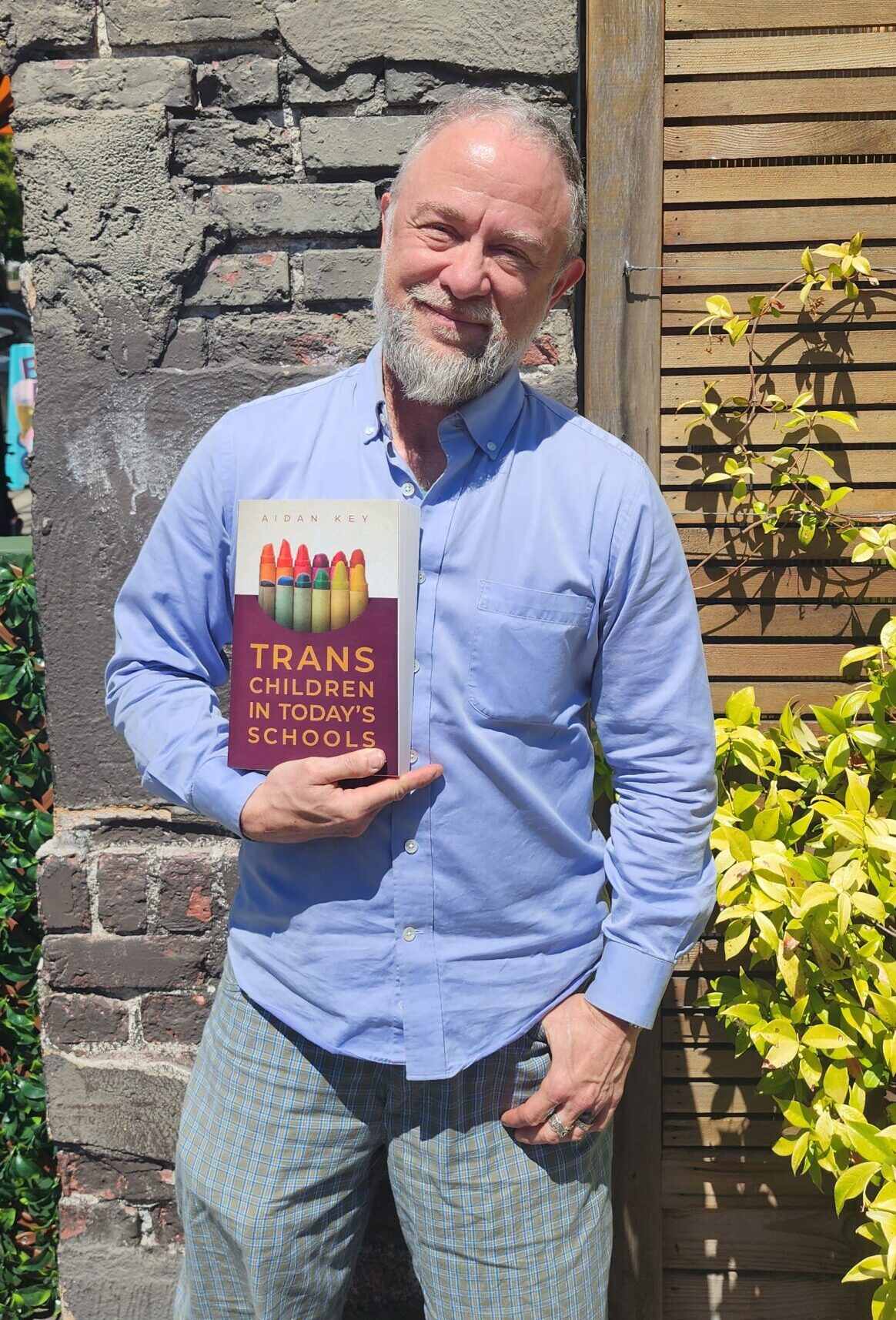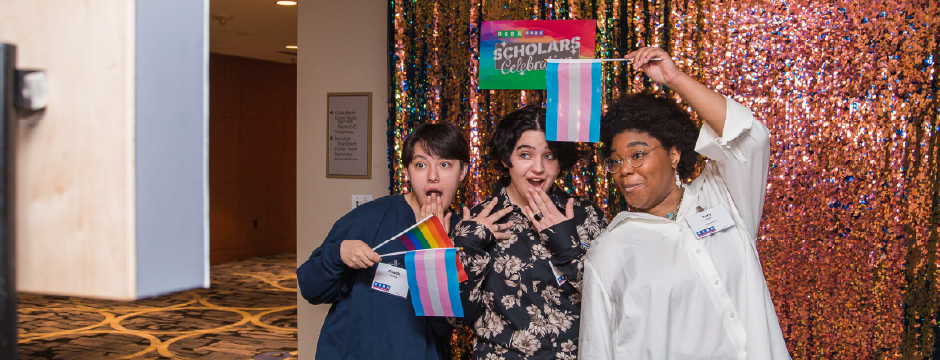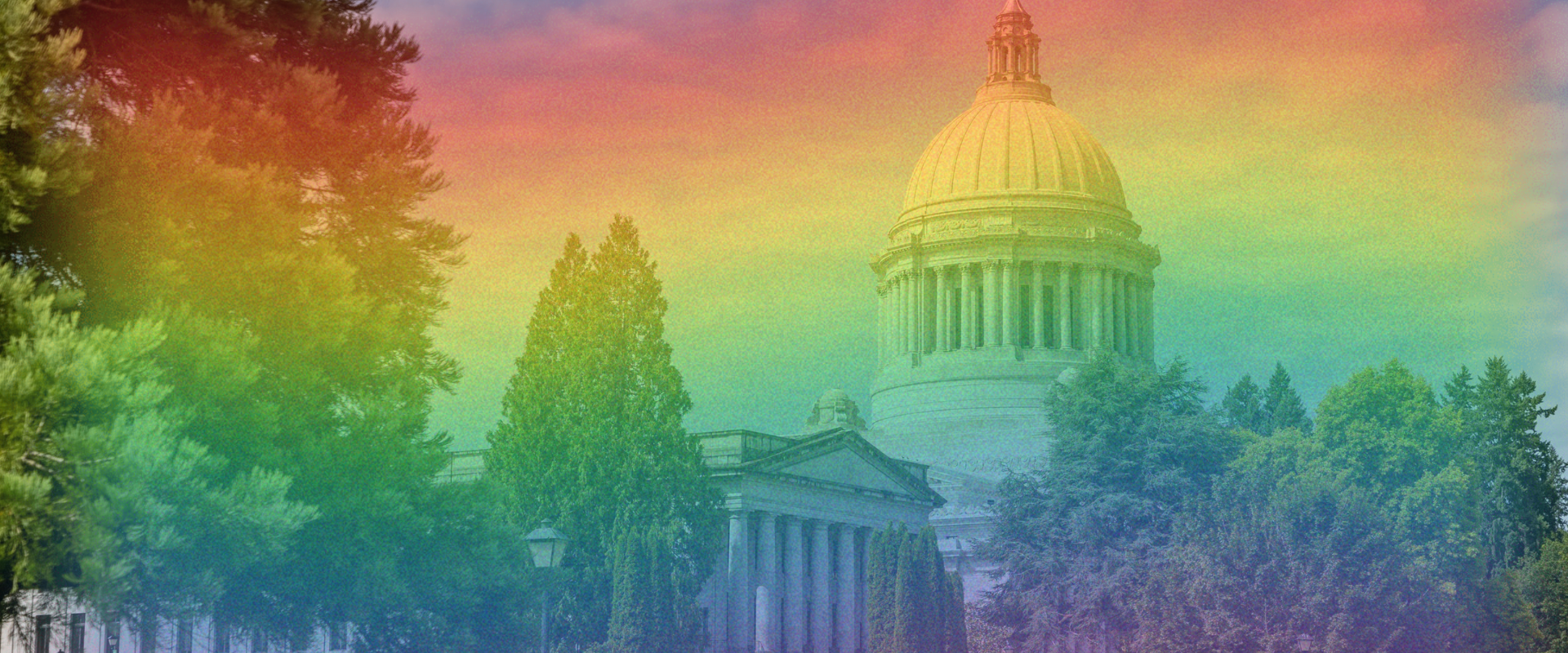We were so excited to get to sit down with Aidan Key, recipient of a GSBA Scholarship in 2004 and 2005 and GSBA Community Leader of the Year in 2017 to catch up on his journey, reflect about what a scholarship from GSBA meant to him at that time in his life, and hear all about his brand new ground-breaking book Trans Children in Today’s Schools published by Oxford University Press (available wherever books are sold!).

What motivated you to write and publish Trans Children in Today’s Schools?
The motivation for the book began when I received a request for assistance from a single school over 15 years ago. They had a transgender 3rd grader and didn’t know how to address his needs much less explain his experience to other students or parents. Prior to this invitation, I’d been offering gender inclusion training for workplaces and health care organizations. Of course, this work was focused on adult trans people, not children. When I got that first call from the school saying, “Hey, we have a transgender child at our school, what should we do?”, I experienced a significant shift. I resisted the urge to say, “I have no idea!” and began thinking instead “What could they do? How might teachers talk to students about gender differences ? How should they address the questions and concerns of other parents? Those kinds of things hadn’t really been discussed before as very few children were openly identified at transgender at this point. So, sitting down with them was the beginning of a massive learning journey for me. How do we do this? What do you say to children? Some of the questions from parents are understandable and need addressing. Some are fear-based and, frankly, outlandish. I felt it was important to respectfully address all of these questions but even more importantly to examine the origins of their fear. These are just little kids – why is this topic so unsettling for adults? Many of the scenarios they imagined were so out there! Where is that coming from?
As we dove into those questions, I found that we could find solutions over and over. Sometimes, just naming a fear brings it out into the light of day and the apprehension dissipates. We would discuss practical things like bathroom and locker room usage, but they would often bring up genitals, sexuality, safety concerns, and whether children “should be exposed to things like that!” The real challenge of that early work that continues to this day is to delve into all of these questions in order to calmly sort out what are the practical things to address and what are simply imagined, dangerous scenarios. I’ve had such great success in navigating these conversations that I desperately wanted to share it with as many people as possible, hence my book, Trans Children in Today’s Schools.
My learning journey has been over 15 years now and I’ve stepped into hundreds of schools across the nation. Regardless of whether a state is politically red or blue, I’ve found that the questions are often very consistent, even though there is a lot of variation amongst the kids experiences, their identities, and the families and communities in which they live – here’s how to be inclusive of transgender kids. The book is really about how do you navigate this societal complexity, especially the volatility associated with adults’ fears. How do you navigate that? How do you address those questions, concerns, and the fears and resistance from some people?
Is there any major difference you see in today’s young people vs previous generations?
These gender-diverse kids aren’t waiting for anybody. Young people are blowing gender out of the water. And they don’t understand that older generations don’t get it. Legislate it all you want. Have at it, but the youth are moving this paradigm shift forward no matter. The children and grandchildren of these politicians are also trans, non-binary, and thinking about gender far more expansively. Nothing motivates adults more than their own children. Eventually, they will have to change their hearts and minds because their own children will insist on it. And that’s one of the reasons I truly love this book. We get to see gender expansiveness through the eyes of children before it gets all tied up and rigid. Children also do not conflate gender identity with sexuality. We as adults need this reminder!
Bringing in the notion that we humans have expansive gender identities – it’s not as simple as only boys and only girls – has been a game changer for society, even within the gay and lesbian community. I think everyone can feel it’s a game changer but are not certain what that means. For some, it’s a cause for celebration. For others, it feels dangerous and catastrophic. Younger generations are more of the former mindset while we as older generations fear that it is the latter.
Who is this book meant for?
My hope for the book is that every educator across the country will want to read it. I hope that it finds its way into many university departments – education, psychology, sociology, and so on. But also I’d like it to find its way to the families of those kids. I’d like it to find its way into the hands of people who do youth advocacy work. Multiple target audiences made it really complicated to write! My hope is that any target individual would gain insight into the perspectives of others. I want a school principal to know what challenges these youth and their families face. So many families reach out to a school administrator for assistance only to have a school principal say, “Ok, just tell me what I should do!” I want parent to understand how challenging it can be to change systems and traditions. Then I want them to work together to shoulder their respective responsibilities – the parent needs to raise their child in a supportive environment at home and the school needs to create the supportive environment at school.
Has there been anything surprising to you about your work?
I was surprised to realize just how much I really enjoy speaking to the parents of these kids. They have so many concerns. How can this be? I didn’t see any signs. My kid is going to have such a hard life. Who is going to love my kid? Is my kid going to have a career? Suddenly, the world gets very small and loaded for these parents. It’s scary. They’re scared for their child. I can relate to that. I worried about so many of those things as I began my own gender transition. What is life going to be like? Is my community going to reject me? Will I find someone to love me? Will I find satisfying work? Will I even be able get a job at all? Will I lose family and friends? Will I be safe? So, I personally have found a kinship with these parents, even though most of them are not trans, bi, gay or lesbian. They often struggle because it’s not their personal experience. They think they can’t relate to it. Yet, they still hold these same worries on behalf of their children. So, I just wanted to show up, grab their hands and say, it’s going to be ok. Once they move through their early distress, there’s nothing more powerful than seeing these parents as they advocate for their kids! They will move mountains. I can’t even consider them as “just allies” because, to me, they are our community. They are us. They are having similar experiences of loss, stigmatization, rejection, and even danger. I love helping them bridge the gap in their understanding in order to better understand their own children. That is a powerful motivator for me.
It has been nearly two decades since you were the recipient of a GSBA Scholarship. Looking back now, what did it mean to you?
In the early 2000s, I decided that I wanted to go back to school. It had been many years since I squeezed out a few credits at a very homophobic Seattle Pacific University, and I was living paycheck to tiny paycheck. How was I going to do this? I was looking at Antioch University as they had an excellent way of supporting adult learners like me with their BA completion program. My leadership and advocacy in my community was during a very volatile time. Trans people were not very visible in lesbian and gay community and I decided I was going to put it on the map. I had received a lot of pushback, and had some amazing experiences and also some very painful ones too. I’d obviously struck a chord! While activism and leadership were a big part of my program at Antioch through independent study options, I told my advisor that I needed a degree that would help me be immediately employable and financially stable. I felt there was no room for activism in my future. I imagined stepping into a business career and leaving leadership behind. I applied for a GSBA scholarship and shared some of my journey with them. I didn’t tell them how depleted I was feeling about my activism work. I didn’t tell them that I just wanted out! I felt dread when someone on the interview team delved into questions about my leadership work. It felt critical to me and I immediately pushed back. “Great,” I thought. “Just blew that interview. So much for a scholarship.” But no, to my shock, I was given the maximum scholarship amount. Not just that year, but the next year as well.
I have to say that the GSBA members on those interview panels really showed up. They were with me through anger, confusion, and grief. We laughed and cried together in those rooms. They let me know that they represented a far greater body of people who cared about the work I was doing. It wasn’t just the half dozen of them in that room. They wanted me to know that they were responsible for thousands of donors who wanted to make the world a better place for all of us. These were GSBA members who may not have fully comprehended the intricacy of my work but definitely understood the historical power of it. To them, it was worthy of celebration. My advisor at Antioch ignored my earlier plea to avoid activism and leadership and instead held a mirror up to myself, just like GSBA did so I could see what they saw – the impact of the activism work I was already doing.
Looking back now, it is a powerful statement about the GSBA mission, vision, and the many, many people who are part of that. It was huge and life-changing for me. To know that the passion I had is ok. Not only ok, but it was worth writing a check for. What they saw in me, and what they want to continue to see in me, is our shared passion to change the world for the better.
That kind of support is immeasurable and has extended well beyond the funds that helped me finish my degree. Seeing my leadership work, and now my book, Trans Children in Today’s Schools, through the eyes of the GSBA membership, is a prime motivator and will continue to propel me through the rest of my life’s work. So, if you want to see your GSBA scholarship funds at work, go get a copy of Trans Children in Today’s Schools, read it, and then hand it off to someone else. We’ll keep changing the world together!
To hear more from Aidan, check out his recent interview with our friends over at New Day NW:



